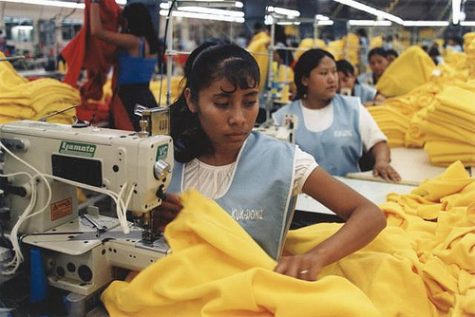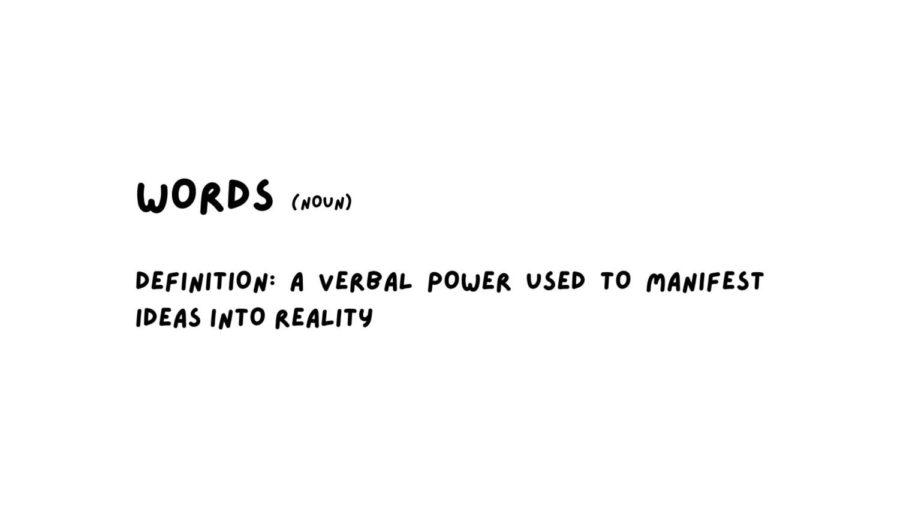Your Shirt Costs More Than You Think
April 20, 2017
Being able to buy cute clothes for a good price seems like the perfect deal for most consumers. However, very few people realize the long-term effects of these purchases. Fast fashion is defined as retailers using designs to capture designs as they move from catwalk to store front very quickly. Traditional fashion houses design new clothes each season, but fast fashion retailers design new clothes each week and have transformed the industry into 52 seasons. Well known fast fashion retailers include Forever 21, H&M, Zara, Topshop and many others alike. These stores allow consumers to shop the latest trends at a fraction of the cost of their runway counterparts. By supporting the fast fashion industry consumers also support pollution, low-quality craftsmanship, poor working conditions, plagiarism, and overconsumption.
As time progresses, western society continues to embrace “throw-away culture”. Americans, in particular, enjoy things that are fast, easy, and disposable. However, many people fail to include fashion when considering this type of activity. The average American throws away 80 pounds of clothing per year. Many of these clothing items are made of synthetic materials such as polyester and nylon which can take thousands of years to biodegrade.
Fashion is one of the most polluting industries in the world today. Consumers are buying more than ever, which also means they are getting rid of more things than ever. The world consumes over 80 billion pieces of clothing each year, which is a 400% increase from a decade ago. With the influx of synthetic materials, clothing is also taking a dangerously long amount of time to biodegrade. Some people throw their clothing directly into the

trash, while others choose to donate their clothing to secondhand shops like Goodwill and Salvation Army. However, only 10% of clothing donated to these stores are actually sold, the rest end up in landfills or are sent to developing countries where they also have a negative effect. The greedy habits of the western world wreak the most havoc in developing nations. First, most of the excess clothing is sent to these countries through charity organizations which then leads to flooding of clothing markets and can destroy the businesses of local clothing makers. Most clothing companies outsource their production, which means that most of the clothing being made is produced in China, India, and Bangladesh. India is the largest producer of cotton for the fashion industry. But, companies like Monsanto have hurt local farmers by pressuring farmers to use genetically modified seeds and harsh pesticides that can be very expensive and put someone out of business. Pesticide use has also affected the health of local populations, causing children to be born with severe mental handicaps and physical deformities.

The most heinous crimes that the fast fashion industry commits is abusing the rights of workers. 1 in 6 people today works in the garment industry, and 85% of all garment workers are women. Most of these women work to earn less than $3 dollars a day. Workers often experience both physical and emotional abuse while working. Each worker is usually assigned to do one specific type of stitch or task to do, they are then put under immense pressure to meet deadlines to keep up with the fast fashion industry. Another problem that workers face is dealing with extremely poor working conditions. In 2013, a garment factory in Bangladesh collapsed and killed 1,129 people making it the most deadly garment factory incident in history. The building had been showing signs of damage after being improperly converted into an industrial working site. Corporate retailers received criticism for showing minimal oversight to these factories workers and for demanding very short production deadlines which put pressure on workers. Many of the victims included the children of the workers. Sadly, child labor is common under these conditions due to the fact that workers are unable to pay for child care and the factories are also in need of extra workers.
One of the basic issues with the fast fashion industry is the poor quality of the materials. In order to keep costs down, manufacturers have turned to polyester and other synthetic materials to construct clothing. However, these materials do not have the same lifespan as natural fibers such as cotton, linen, wool, etc.. This production of cheaply made, fossil fuel based clothing feeds into the throw-away culture mentioned before. Consumers believe they are getting a good deal so they buy the cheaply made item, then the item falls apart so they have to replace it with another cheaply made item and this cycle repeats itself. Over time, the consumer actually spends more money replacing the cheaply made item as opposed to investing in one high quality version of the same item. Fast fashion companies are masters of marketing. They use celebrities and trendy slogans to attract buyers. They construct clothing that looks identical to a high quality item while it is on the rack. Yet, once the buyer wears the clothing piece and washes it, the product begins to fall apart. Another tactic that retailers use is convincing buyers that they are getting a “discounted” item at an outlet store. What really happens is that manufacturers make a product with lower quality materials and use marketing to convince buyers that they are getting the unbought, high quality garment for a low price, when in reality they are buying a cheaply made garment for a regularly marked price. Companies use the ignorance of consumers to their advantage by setting up marketing traps that buyers repeatedly fall into.
Over the last few decades, the fashion industry has been moving in the wrong direction. Corporate retailers have become (or maybe have always been) more focused on their own wealth than on the health and well-being of the general public. However, all of the blame can’t be put on corporations for the wrongdoings of the fashion industry, consumers play an equally important role in the industry. It is crucial that buyers demand for retailers to be more transparent about their supply chain and what they are putting in their products. Buyers need to educate themselves about the practices of their favorite companies and evaluate if they still consider them favorites. Fast fashion is not the only industry that needs to change, very few companies are transparent about what goes into making our beloved products. Companies like Patagonia, Everlane, and Prana have taken steps toward cleaning up their supply chain and becoming more transparent. Some brands may not be considered fast fashion, however, there is a high probability that they could improve their practices and be more upfront with buyers. With transparency comes accountability, and with accountability comes brand loyalty. So it’s a win for all parties. Consumers can educate themselves through various mediums such as documentaries like The True Cost on Netflix or book like Overdressed by Elizabeth L. Cline. The most important thing for people to understand is that the $7 off-the-shoulder top in the store front window is not worth putting your morals, our environment, or someone else’s life at risk.















































